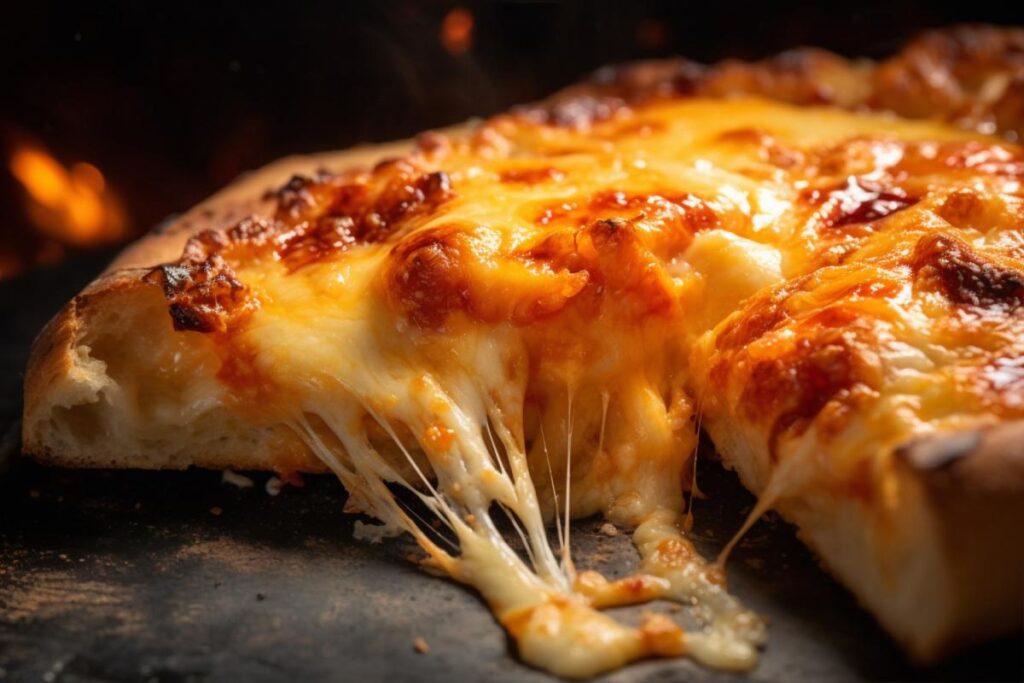Italy is renowned for its rich culinary traditions, and one of its most beloved exports is mozzarella cheese.
This soft, creamy cheese has captured the hearts and taste buds of people around the world.
In this article, we will delve into the history, production process, and various types of mozzarella, as well as explore its cultural significance in Italy.
The History of Mozzarella
Mozzarella cheese has a long and storied history that dates back to ancient times. Its origins can be traced to the region of Campania in southern Italy, where it was first made by the monks of the Monastery of San Lorenzo in Capua.
The cheese was initially made from the milk of water buffaloes, which were introduced to Italy by the Arabs during their occupation of Sicily in the 9th century.
Over the centuries, mozzarella gained popularity and became a staple in Italian cuisine. It was traditionally made by hand, with skilled cheesemakers stretching and shaping the curds to create the characteristic texture and shape.
Today, while industrial production methods have been introduced, artisanal mozzarella is still highly valued for its superior quality and taste.
The Production Process
The production of mozzarella involves several key steps, each of which contributes to its unique flavor and texture.
The process begins with the collection of fresh milk, which can come from either water buffaloes or cows. The milk is then heated and combined with rennet, an enzyme that helps coagulate the milk and form curds.
Once the curds have formed, they are cut into small pieces and left to rest. This allows the whey to separate from the curds, which are then heated and stretched.
The stretching process gives mozzarella its characteristic elasticity and stringy texture. The cheese is then shaped into balls or other desired forms and immersed in cold water to cool and solidify.
Artisanal mozzarella is often made using traditional methods, with the curds being stretched and shaped by hand. This labor-intensive process requires skill and experience to achieve the desired texture and consistency.
Industrial production methods, on the other hand, involve the use of machinery to automate the stretching and shaping process.
Types of Mozzarella
There are several different types of mozzarella, each with its own unique characteristics and uses. The most common types include:
- Bufala Mozzarella: Made from the milk of water buffaloes, bufala mozzarella is known for its rich, creamy flavor and soft, elastic texture. It is often enjoyed fresh, either on its own or in salads and sandwiches.
- Fior di Latte Mozzarella: This type of mozzarella is made from cow’s milk and has a milder flavor compared to bufala mozzarella. It is commonly used in cooking and melts well, making it ideal for pizzas and pasta dishes.
- Smoked Mozzarella: As the name suggests, smoked mozzarella is infused with a smoky flavor. It is made by exposing the cheese to smoke from burning wood chips. The smoky taste adds a unique dimension to dishes and pairs well with cured meats and grilled vegetables.
- Bocconcini: Bocconcini are small, bite-sized mozzarella balls that are often served as appetizers or added to salads. They are made from cow’s milk and have a mild, milky flavor.
The Cultural Significance of Mozzarella
Mozzarella holds a special place in Italian culture and cuisine. It is a key ingredient in many traditional Italian dishes, such as Caprese salad, Margherita pizza, and lasagna.
The cheese’s versatility and ability to melt and stretch make it a favorite among chefs and home cooks alike.
In addition to its culinary importance, mozzarella is also deeply rooted in Italian traditions and celebrations. In the region of Campania, where mozzarella originated, there is a festival dedicated to the cheese called the Mozzarella Festival.
This annual event celebrates the art of mozzarella making and attracts visitors from all over the world.
Furthermore, mozzarella has become a symbol of Italian identity and pride. It is often associated with the concept of “Made in Italy” and is considered a hallmark of quality and authenticity.
Italian mozzarella producers have even sought protected designation of origin (PDO) status from the European Union to preserve the integrity and reputation of their product.
Summary: The Delights of Mozzarella
Mozzarella cheese is a true culinary treasure that has captivated people’s palates for centuries. Its rich history, production process, and various types make it a versatile and beloved ingredient in Italian cuisine.
Get the news first!
Whether enjoyed fresh in a Caprese salad or melted on a piping hot pizza, mozzarella never fails to delight the senses.
As you explore the world of mozzarella, remember to savor the flavors and appreciate the craftsmanship that goes into creating this beloved cheese.
From the monks of ancient Italy to the skilled cheesemakers of today, mozzarella continues to bring joy and satisfaction to cheese lovers around the globe.

Make Cheese!
